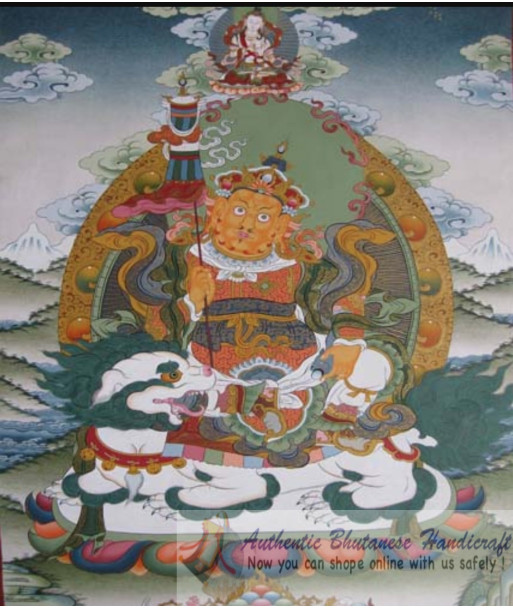- -50%






A **Zambala Thanka** painting features Zambala, a deity in Tibetan Buddhism associated with wealth and prosperity. Zambala, also known as Jambhala in Sanskrit, is revered for his ability to bestow material abundance and remove financial obstacles.
 Security policy
Security policy
(edit with the Customer Reassurance module)
 Delivery policy
Delivery policy
(edit with the Customer Reassurance module)
 Return policy
Return policy
(edit with the Customer Reassurance module)
A **Zambala Thanka** painting features Zambala, a deity in Tibetan Buddhism associated with wealth and prosperity. Zambala, also known as Jambhala in Sanskrit, is revered for his ability to bestow material abundance and remove financial obstacles.
### Key Elements of Zambala Thanka Painting:
1. **Central Figure**:
- **Zambala**: The central figure in the thanka is Zambala, typically depicted as a powerful, auspicious deity. His appearance often includes:
- **Rich Attire**: Zambala is usually adorned in elaborate, regal clothing, signifying his connection to wealth and prosperity. He often wears a crown and jewelry, highlighting his status as a wealth deity.
- **Color and Posture**: He is commonly depicted with a yellow or golden complexion, symbolizing wealth and abundance. His posture can vary, but he is often shown seated in a relaxed and confident manner, sometimes with one leg raised.
2. **Attributes**:
- **Wealth Symbols**: Zambala might be depicted holding symbolic objects associated with wealth and abundance, such as a treasure vase, a mongoose, or a bag of jewels. These objects symbolize the bestowal of material and spiritual riches.
- **Accompanying Figures**: Sometimes, Zambala is accompanied by attendants or consorts, who assist in distributing his blessings.
3. **Symbolic Elements**:
- **Treasure Vase**: A common symbol associated with Zambala is the treasure vase, which represents inexhaustible wealth and abundance. The vase may be depicted overflowing with jewels or precious items.
- **Mongoose**: Often seen beside Zambala, the mongoose is a traditional symbol of wealth and prosperity, known for its association with generating precious gems.
4. **Background and Surroundings**:
- **Auspicious Symbols**: The background of the thanka may include auspicious symbols such as the Eight Auspicious Signs (Ashtamangala), which include the lotus, conch shell, and wheel of Dharma, all of which are considered to bring good fortune.
- **Scenic Elements**: The painting might feature serene and prosperous landscapes, including lush gardens or celestial realms, reflecting the abundance and beauty Zambala represents.
5. **Mantras and Texts**:
- **Inscriptions**: Tibetan script or mantras related to Zambala’s blessings and wealth generation may be included around or within the painting. These mantras are used to invoke his presence and attract prosperity.
### Significance:
- **Wealth and Prosperity**: Zambala is primarily venerated for his ability to bestow material wealth and remove financial obstacles. The thanka serves as a focal point for prayers and practices aimed at enhancing financial stability and success.
- **Spiritual Practice**: The Zambala Thanka is used in meditation and rituals to invoke his blessings and guidance. Practitioners believe that connecting with Zambala can help them achieve both material and spiritual abundance.
- **Symbol of Abundance**: The thanka symbolizes the potential for prosperity and the removal of financial hardships, offering inspiration and hope for those seeking to improve their financial situation.
The Zambala Thanka is both a spiritual object and a practical aid, reflecting the deep-seated belief in the transformative power of deities to influence the material and spiritual aspects of life.